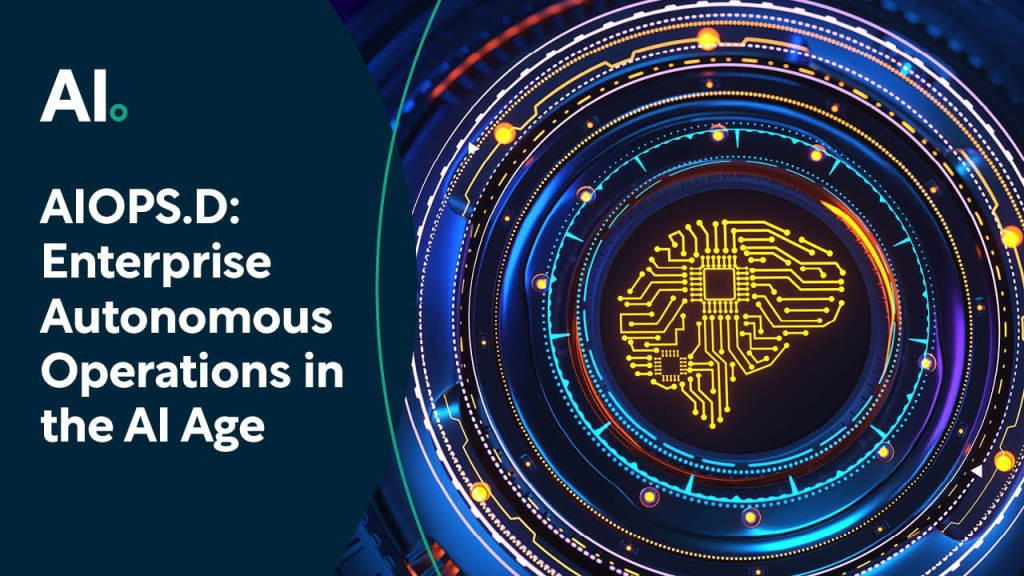
Are you tired of manually monitoring and troubleshooting your IT infrastructure? Do you want to streamline your operations and improve your business outcomes? If so, you might be interested in AIOps.
AIOps stands for Artificial Intelligence for IT Operations. It is a set of practices and tools that use machine learning, data analytics, and automation to enhance the efficiency, agility, and reliability of IT operations.
But what is the ultimate goal of AIOps? Let’s find out.
The Big Picture
At a high level, the goal of AIOps is to help organizations achieve digital transformation. Digital transformation refers to the process of using technology to fundamentally change how businesses operate, deliver value to customers, and compete in the market.
Digital transformation is not a one-time event, but a continuous journey. It requires organizations to adopt new business models, processes, and technologies that enable them to be more agile, customer-centric, and data-driven.
AIOps is one of the enablers of digital transformation. By leveraging AI and automation, AIOps can help organizations to:
- Reduce operational costs
- Improve service quality
- Increase business agility
- Enhance customer experience
- Mitigate risks
- Innovate faster
The Technical Details
To achieve these goals, AIOps relies on several technical capabilities:
Anomaly Detection
AIOps can detect anomalies in IT systems and applications that are not easily identifiable by humans. For example, it can detect performance degradation, security breaches, configuration drift, and other issues that can impact service delivery.
Root Cause Analysis
AIOps can perform root cause analysis (RCA) to identify the underlying causes of issues and suggest remediation actions. RCA is a critical capability for reducing mean time to resolution (MTTR) and improving service availability.
Predictive Analytics
AIOps can use predictive analytics to anticipate issues before they occur and take proactive measures to prevent them. Predictive analytics can also help organizations to optimize their resource utilization, capacity planning, and service level agreements (SLAs).
Automation
AIOps can automate routine tasks such as log analysis, ticket triage, and incident resolution. Automation can free up human operators to focus on more strategic and value-added activities.
The Benefits
The benefits of AIOps are manifold:
Faster Time to Value
AIOps can accelerate time to value by reducing the time and effort required to detect, diagnose, and resolve issues. This can lead to faster service delivery, higher customer satisfaction, and better business outcomes.
Improved Efficiency
AIOps can improve the efficiency of IT operations by automating repetitive tasks, optimizing resource usage, and reducing waste. This can lead to lower operational costs, higher productivity, and better resource allocation.
Enhanced Quality
AIOps can enhance the quality of IT services by detecting and resolving issues proactively, reducing downtime, and improving reliability. This can lead to higher service availability, better performance, and lower customer churn.
Increased Innovation
AIOps can enable organizations to innovate faster by providing real-time insights into IT operations, identifying opportunities for optimization, and facilitating experimentation. This can lead to new revenue streams, competitive advantage, and market disruption.
The Challenges
Of course, AIOps is not a silver bullet. There are several challenges that organizations need to overcome to reap the benefits of AIOps:

Data Quality
AIOps relies on high-quality data to generate accurate insights and predictions. Poor data quality can lead to incorrect analysis, false positives, and missed opportunities. Organizations need to invest in data governance, data integration, and data quality management to ensure that their AIOps initiatives are successful.
Skill Set
AIOps requires a combination of technical and domain expertise. Organizations need to have data scientists, machine learning engineers, domain specialists, and IT operations professionals who can work together to develop, deploy, and maintain AIOps solutions.
Change Management
AIOps can disrupt existing workflows, processes, and roles. Organizations need to have a well-defined change management strategy that can address the cultural, organizational, and process changes that are required for AIOps adoption.
The Future
Despite the challenges, AIOps is here to stay. According to Gartner, by 2023, 40% of DevOps teams will augment their practices with AIOps-enabled automation, up from 5% in 2019.
As AIOps continues to mature, we can expect to see more advanced capabilities such as:
- Natural Language Processing (NLP)
- Explainable AI
- Auto-Remediation
- Self-Healing Systems
These capabilities will enable AIOps to become even more intelligent, autonomous, and valuable for organizations.
Conclusion
In conclusion, the goal of AIOps is to help organizations achieve digital transformation by leveraging AI and automation to enhance the efficiency, agility, and reliability of IT operations. AIOps can provide faster time to value, improved efficiency, enhanced quality, and increased innovation. However, AIOps also presents several challenges such as data quality, skill set, and change management. As AIOps continues to evolve, we can expect to see more advanced capabilities that will make it even more valuable for organizations.
